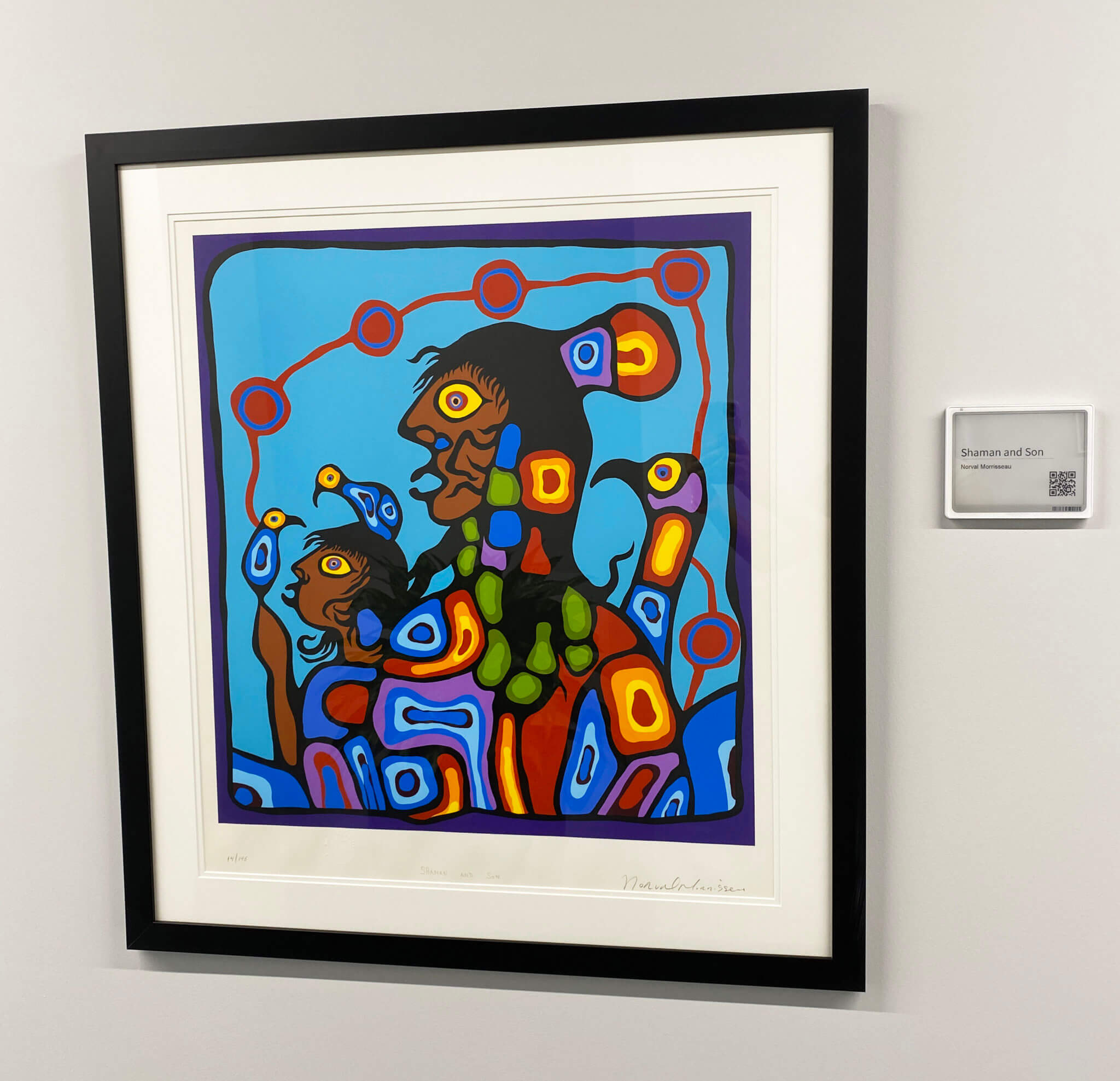As winter ended and faded into spring, the Danavation team was getting ready to move into our new corporate headquarters. But inside our building isn’t just the home of Digital Smart Labels™—it’s home to over 30 pieces of artwork created by Canada’s Indigenous artists.
In Indigenous communities, art is more than just an image—it tells a story, shares their rich history and culture, and portrays their knowledge and significance of their land. And we wouldn’t be where we are today without the many outstanding achievements they have made—and will continue to make—in Canada. We’re proud to pay homage to the First Nations, Inuit, and Métis people in Canada, and to learn more about the artwork that’s made an impact on the world as we know it.
History through art
An article from The Canadian Encyclopedia titled History of Indigenous Art in Canada mentions, “The history of Indigenous art in Canada begins sometime during the last Ice Age between 80,000 and 12,000 years ago. To date, however, the oldest surviving artworks (excluding finely crafted, aesthetically significant stone tools) are datable to no earlier than 5,000 years ago.”
There is a large amount of history and culture behind each Indigenous art piece. Every painting tells an individual story in its unique way. Along our walls you’ll find the works of Norval Morrisseau, Brian Marion, Russell Noganosh, John LaFord, Ken Kirkby, and Steve Snake, to name a few. And although each and every painting differs, there’s also an element that ties them together as well; the portrayal of Indigenous history and heritage.
Paintings and storytelling
An informative article from National Geographic titled Connecting Cultures: A Journey Through Indigenous Art in Canada mentions, “Art doesn’t resonate if it’s merely a technique mimicked. It needs an author, a personal story; one has to have something to say.”
Norval Morrisseau is a part of the Anishinaabe community and his work features stories from Anishinaabe history. Morrisseau describes his work as ‘amulets’ or symbols of protection for the Indigenous community. For example, his painting Migration/The Great Flood highlights the Indigenous migration to Turtle Island via the Bering Strait. The piece is also called The Great Flood, as the story of Turtle Island begins with the creator flooding the earth to help people begin anew. The story of Turtle Island is an important piece of oral history of the creation of our earth for the Cree, Iroquan, and Anishinaabe peoples.
Other artists such as Brian Marion rely on the spiritualism of the Ojibway Culture for inspiration as he draws from Shaman art techniques. Many of his paintings include a variety of colours and similar applications to those found from ancient pictographs within Canada.
When Russell Noganosh was asked about the inspiration behind his artwork, he said, “What inspires me? A walk in the bush, seeing the mountains, being a participant in powwows and ceremonies, stories from elders…” Overall, the essence of his work derives from his past experiences and the nature around him.
Paying homage where it’s due
Although each artist featured throughout our headquarters has their own story and style of work, there are many similarities as well. They have all studied their culture and past well, and have in some way or another relied on the original ancient art first created by their ancestors. Whether they have embraced the authentic traditional style of paintings or have mixed in a little bit of the modern and contemporary, each painting is unique as to what they portray through it.
The same article from National Geographic above followed a journey of an Australian artist discovering Indigenous art through Canada. After meeting a few artists in different settings, he was able to understand it better. He goes on to share that in the end he “experienced something culturally familiar—a way of life still quietly, yet profoundly connected to the land.”
Indigenous art is important to our communities because it allows the expression and acknowledgment of Indigenous culture. For so long, Indigenous peoples were unable to express their stories, histories, and knowledge through their language, song, or art. This is but a small part of the duty we have to acknowledge and appreciate Indigenous peoples.
The awareness and presence that all of their work brings through the storytelling of their culture, history, land, and spirituality are essential to society today. They say a picture says a thousand words; these art pieces say a lot more.



